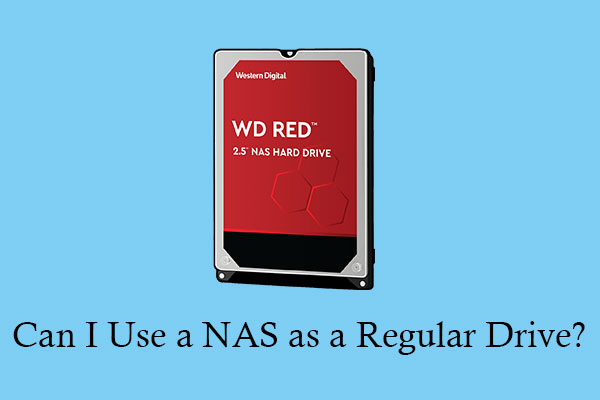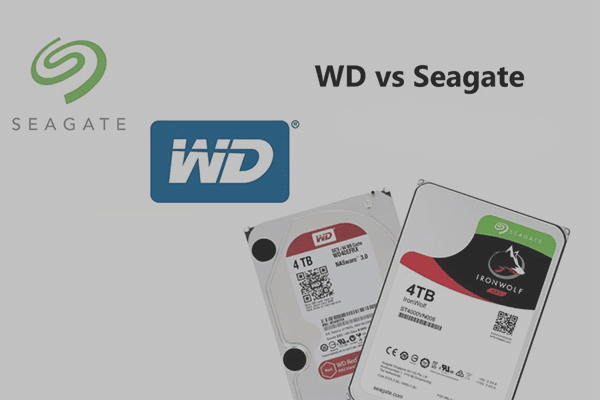When choosing a NAS drive, some people may not know how to choose between Seagate IronWolf and WD Red. In this post, MiniTool Partition Wizard shows you Seagate IronWolf vs WD Red specifications and lists some factors you should take into consideration when purchasing a NAS drive.
What Should You Look for in a NAS Drive?
NAS hard drives are hard drives designed specifically for NAS. In general, NAS hard drives with the same capacity are much more expensive than desktop hard drives, because NAS drives will adopt some unique designs, for example, NAS hard drives are heat-resistant and vibration-resistant, and can be read and written continuously for several weeks.
NAS hard drives are usually used in RAID and the data in the NAS drive is read relatively frequently. In addition, for enterprise-level NAS drive, the requirements should be much higher. It should have the ability of running 24 hours a day, 7 times a day.
When you purchase a NAS drive, you should take the following factors into consideration:
- MTBF: It is short for Mean Time Between Failure and refers to the average working time between two adjacent failures. MTBF can reflect the relative reliability of a series of products and disk array products generally have an MTBF of no less than 50,000 hours.
- Workload: It shows the NAS hard drive will have low failure rate if the drive reads and writes below a certain amount of data per year. Otherwise, the drive is most likely to fail.
- Load/Unload Cycles: It refers to the number of times the head moves in/out of the hard disk when powered on. This factor has nothing to do with the hard drive failure, but it will affect hard drive lifespan.
- Unrecoverable Read Errors: Its unit is usually bits and it refers to every time how many bits of data are read from the hard disk, there may be an error that cannot be corrected. It is one of the most important parameters for evaluating the stability of the hard disk.
Note: Some disk companies have recently begun to use AFR (Annualized Failure Rate) instead of MTBF, because AFR can indicate the reliability of a single product.
Of course, there are also other factors you should consider, for example, rotation speed, max sustained data transfer rate, warranty, 24/7 operation, etc.
Seagate IronWolf vs WD Red
In this part, I will make a chart to show you Seagate Ironwolf vs WD Red in the aspect of specifications:
| Seagate IronWolf (6-12 TB) | Seagate IronWolf (4 TB) | WD Red (8-12 TB) | WD Red (4 TB) | |
| 24/7 operation | YES | |||
| RPM | 7200 | 5900 | ~5400 | |
| Max sustained data transfer rate | 210 MB/s | 180 MB/s | 210 MB/s | 178 MB/s |
| Cache | 256 MB | 64 MB | 256 MB | 64 MB |
| RAID support | All configurations | |||
| Enclosure | 1-8 bay | Up to 8-bay or rack mounted | ||
| Workload | 180 TB/year | |||
| MTBF | 1 million hours | |||
| Unrecoverable read errors | <1 in 10^15 bits | <1 in 10^14 bits | ||
| Load/unload cycles | 600,000 | |||
| Power-on hours | 8760 | Not disclosed | ||
| Vibration sensor | YES | NO | ||
| Average power consumption | 7.8 – 8.8 W | 4.8 W | 5.7 – 8.8 W | 5.3 W |
| Idle power consumption | 5.0 – 7.6 W | 3.95 W | 2.8 – 5.3 W | 3.4 W |
| Standby power consumption | 0.6 – 0.8 W | 0.5 W | 0.5 – 0.8 W | 0.4 W |
| Noise levels | 27 – 32 dB | 23 – 25 dB | 20 – 29 dB | 25 – 28 dB |
| Rescue service | Optional | NO | ||
| Warranty | 3-year limited warranty | |||
From the above chart about WD Red vs Seagate IronWolf specifications, you can easily know which NAS hard is better for you. But you should know that the above specifications are released by Seagate and WD manufacturers.
Sometimes, you need some tests coming from third party institutions. These more objective data can also help you make a better choice.


![The Best NAS Hard Drives You Can Buy [Here Are 3 Options]](https://images.minitool.com/partitionwizard.com/images/uploads/2019/08/nas-hard-drives-thumbnail.jpg)


User Comments :